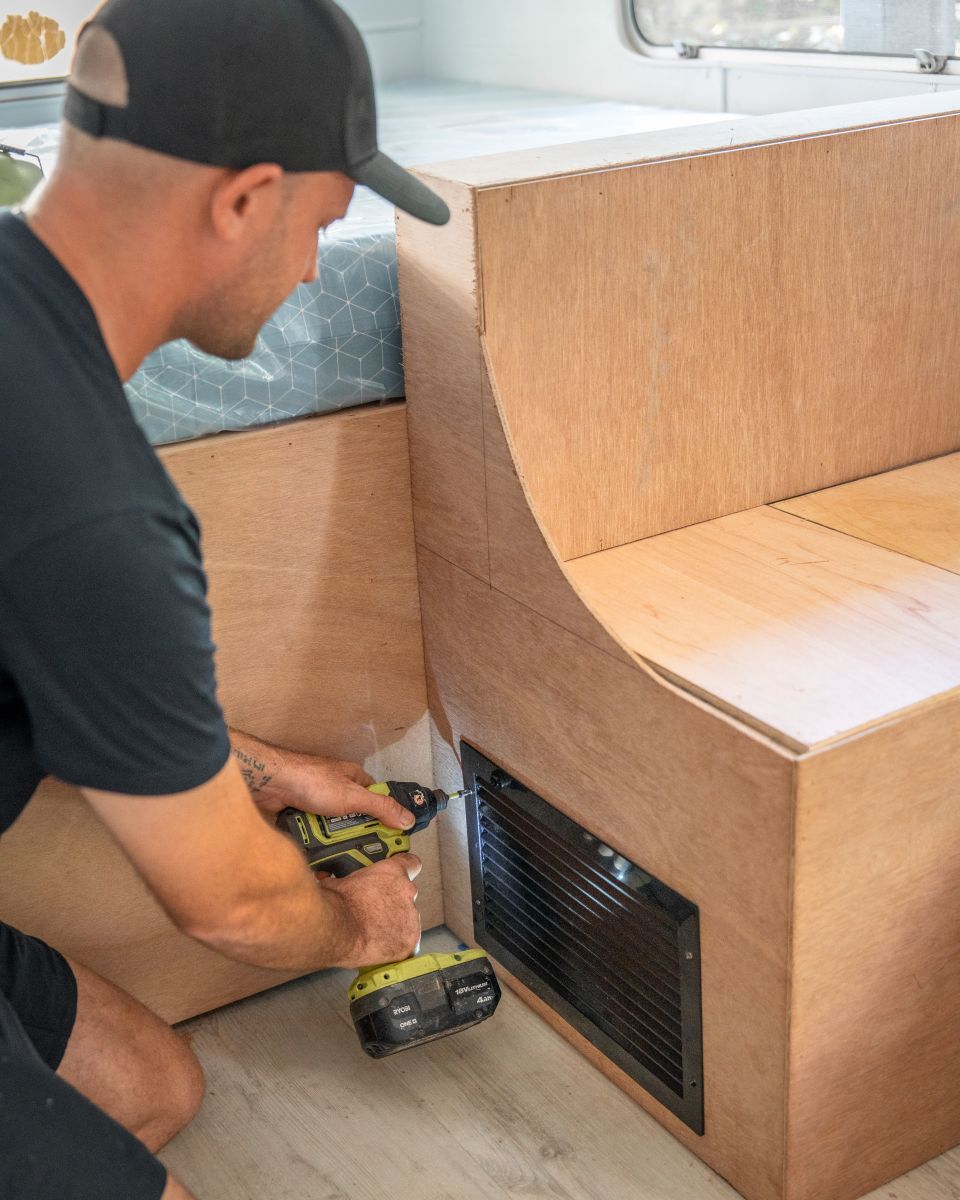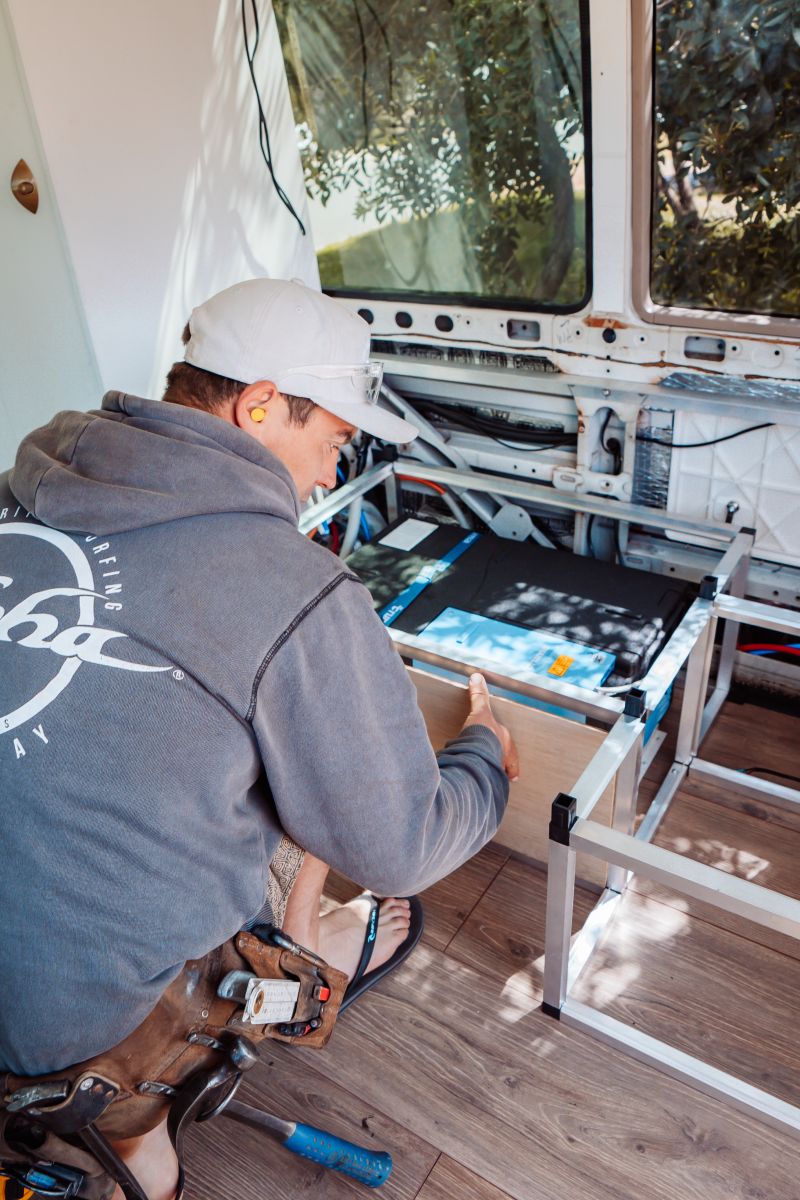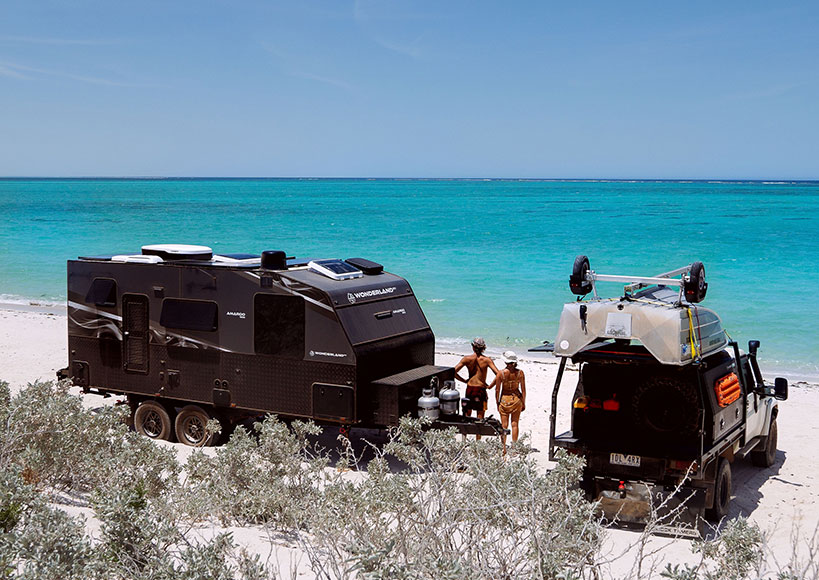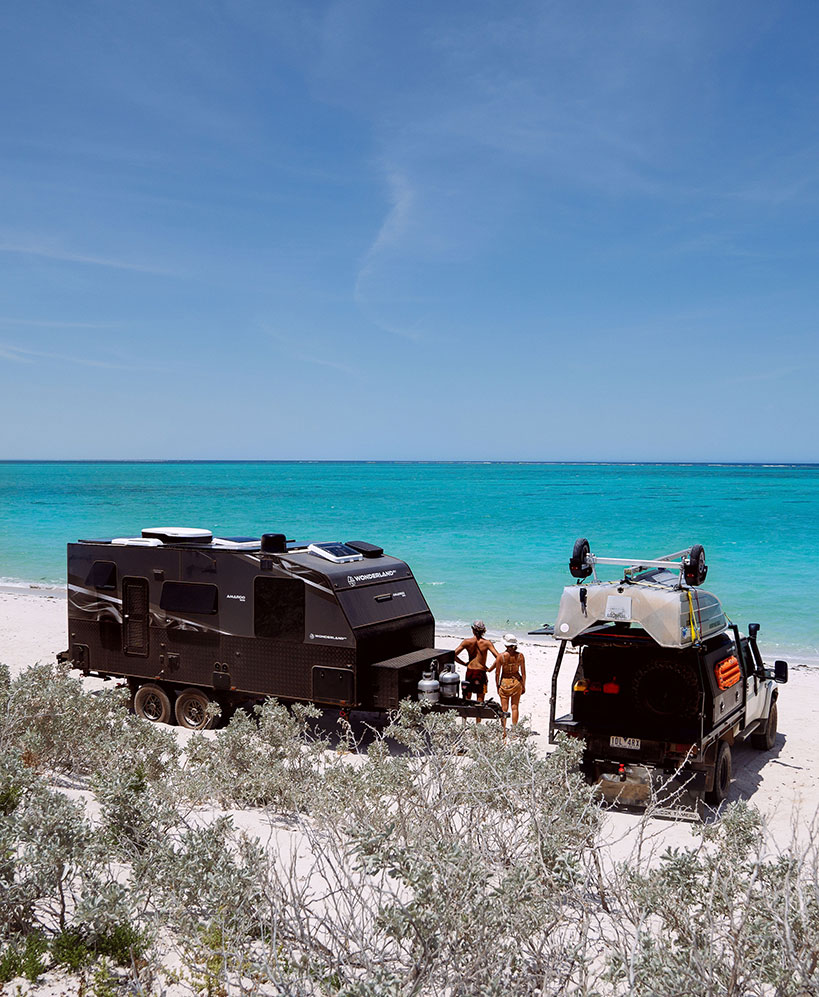Whether you're navigating the red dust of the outback or chasing sea breezes along Australia’s sun-drenched coastline, one thing is for sure, a reliable caravan air conditioner is essential for travelling in comfort across this vast and weather-diverse country. Our beautiful country is no joke when it comes to scorching summers! In the land of extremes, where summer temperatures can soar well beyond 40°C and humidity can turn even a short stopover into a sweaty ordeal, your caravan cooling system isn’t a luxury, it’s a necessity.
Why Air Conditioners Matter for Australian Caravanners
Australia’s climate is famously unpredictable and viable. From the arid heat of inland deserts to the sticky humidity of tropical Queensland and the chilly evenings of southern highlands, every region presents its own environmental challenges. For many RV owners, staying cool and comfortable while on the move means navigating not only the weather but also power constraints, especially for those embracing off-grid caravan air conditioning in remote locations. Add to this the complexity of caravan air conditioner installation and choosing a model suited to both your vehicle size and travel style, and it’s easy to see why picking the best caravan air conditioner can feel overwhelming, rightly so. But don’t worry, we’ve got you covered.
What You'll Learn in This Guide
This guide is designed to demystify the process. Whether you're brand new to vanlife or looking to upgrade, we’ll walk you through everything you need to know, from the different types of caravan air conditioners available, to the key factors to consider before buying. You’ll get a comprehensive brand and model comparison, learn about power solutions for on-grid and off-grid setups, and get expert advice on installation, maintenance, and troubleshooting common issues.
We’ll also cover regional considerations for Australian travel, offer clear buyer’s recommendations, and look ahead to emerging trends and innovations shaping the future of RV air conditioner Australia. Finally, our FAQs will address the most common questions from caravaners just like you. So, let’s get started, because a cooler caravan means a better adventure.
Types of Caravan Air Conditioners
Rooftop Air Conditioners
When choosing a caravan air conditioner, rooftop units are often the go to option for many Australian travellers. These systems are mounted directly on the roof of your caravan or RV, making the most of external space while delivering powerful, efficient cooling. Rooftop air conditioners are a practical solution for a range of caravan types and travel needs, and they’re particularly well-suited to Australia’s demanding climate conditions.
How Rooftop Air Conditioners Work
Rooftop air conditioners operate by drawing in air from outside, cooling it through a refrigerant system, and distributing it inside the caravan via ceiling mounted vents. Most units feature multi-directional airflow and fan speed settings, allowing for effective temperature control and even cooling throughout your living space. Because cool air naturally sinks, this top-down airflow method is especially efficient, quickly cooling the entire van from top to bottom.
These systems are commonly reverse cycle, meaning they offer both cooling in summer and heating in cooler months, making them a versatile solution for year-round travellers.
Pros
-
Space-Saving Design: Because the unit is installed externally, you preserve precious internal space, leaving more room for cupboards, benchtops, and storage. This is a major advantage, especially in smaller vans where every bit of space counts.
-
Efficient Cooling: Thanks to the natural behaviour of cool air sinking, rooftop systems can cool your caravan faster and more evenly compared to other types of air conditioners.
-
Central Placement: These units are typically installed in a central roof location, which allows for optimal air distribution throughout the cabin.
-
High Compatibility: Suitable for most caravans and RVs with a structurally sound roof, rooftop air conditioners are a solid fit for a wide range of vehicle layouts and sizes.
Cons
-
Weight Limitations: While these units are designed for durability, not all caravan roofs, especially those on pop-tops or smaller campervans are built to support their weight. Roof modifications and additional structural supports may be required, which can significantly increase the installation cost.
-
Height Restrictions: Adding a rooftop unit increases your vehicle’s total height. This can create issues when navigating areas with low-clearance obstacles such as car parks, tunnels, or tree-lined campsites.
-
Complex Installation: Installing a rooftop RV air conditioner Australia model typically involves cutting into the roof, wiring, and sealing, tasks that are best handled by a professional. DIY installation may void your warranty or lead to leaks if done incorrectly.
Ideal Applications and Scenarios
Rooftop air conditioners are best suited for full-size caravans and RVs with sufficient roof strength. They’re ideal for those travelling through hotter Australian regions such as the Northern Territory or inland Queensland, where a high-capacity caravan cooling system is essential for comfort and safety.
If you’re planning extended trips or living on the road full-time, rooftop units provide the most effective climate control. For those travelling off-grid, these units can be integrated into off-grid caravan air conditioning setups, provided your power system (batteries, inverter, and solar) is properly sized to handle their higher energy demands.
Top brands like Dometic and MyCOOLMAN offer rooftop models specifically engineered for tough Australian conditions, making them a reliable and long-term investment in comfort and performance.
Under-Bunk Air Conditioners
When rooftop installation isn’t an option, particularly in pop-top caravans, camper trailers, or compact RVs, under-bunk air conditioners provide a smart, space conscious cooling solution. These units are installed inside the van, typically beneath a bed or bench to not take up too much space, and use ducting to distribute air throughout the interior. Designed to cool smaller spaces efficiently, they’re ideal for caravans where roof strength or height restrictions rule out a rooftop model.
How Under-Bunk Systems Work
An under-bunk air conditioner draws in external air via a floor mounted cut out and expels heat through a similar outlet. Cool air is then circulated through a ducted system to different zones in the van. These units are generally compact and lightweight, making them especially suited to smaller caravans or RVs that can't structurally support a rooftop system.
This approach also helps maintain a lower overall caravan roof height, a real benefit for storing the vehicle in garages or accessing height-restricted areas. The positioning inside the caravan also means the system is less exposed to environmental wear and tear.
Pros
-
Ideal for Pop-Tops and Small Vans: Most pop-top caravans, without modification, aren’t built to carry the weight of a rooftop RV air conditioner. Under-bunk systems provide a practical alternative without the need for costly roof reinforcements.
-
Saves Roof Space: Keeps the roof free for solar panels, roof racks, or skylights, ideal for travellers looking to maximise external functionality.
-
Lightweight and Efficient: These systems are generally more compact and energy efficient, making them suitable for both on-grid and off-grid caravan air conditioning setups.
-
Lower Centre of Gravity: Keeping weight low in the vehicle helps improve handling and stability when towing.
Cons
-
Uses Interior Space: Unlike rooftop models, under-bunk systems occupy space inside your van, usually in an under-bed or under-seat compartment. This may reduce your available storage or cupboard space, especially in already compact layouts.
-
Ducting Required: Proper airflow often relies on multi-duct setups, which can increase the installation complexity and cost compared to a single-unit design.
-
Not ideal for 4wd campers and caravans that enter water crossings due to the air inlet and outlets on the floor of the caravan being exposed.
Best Scenarios for Use
If you own a pop-top, camper trailer, or compact caravan, and a roof-mounted system isn’t suitable, an under-bunk air conditioner may be the most logical and cost effective choice. They offer efficient climate control without increasing your van’s height, making them a preferred option for travellers who store their caravan in height-restricted garages or want to avoid major structural modifications. For those after a low profile, caravan cooling system that still delivers on performance, under-bunk units are a strong contender.
Key Selection Factors
Caravan Size and Air Conditioner Capacity
One of the most critical factors in choosing the best caravan air conditioner is ensuring it's correctly sized to suit your van. Selecting a unit with the right cooling capacity means your system will run efficiently, maintain comfort, and avoid unnecessary strain, especially during the height of the Australian summer.
In the caravan and RV industry, general sizing guidelines are as follows:
-
2.0 to 2.5 kW units are typically suitable for caravans up to 16 feet in length.
-
3.0 kW or higher models are ideal for caravans up to 24 feet.
-
Larger motorhomes or fifth wheelers may require dual air conditioners, especially if the layout includes separate living and sleeping zones.
Here’s a helpful breakdown:
|
Caravan Size |
Recommended Cooling Capacity |
Notes |
|
Under 5 metres (≈16 ft) |
2.0–2.5 kW |
Suitable for smaller caravans and compact floor plans. |
|
Over 5 metres (≈16–24 ft) |
3.0 kW or above |
Best for medium to large caravans requiring whole-van cooling. |
|
Large RVs or motorhomes |
Dual units may be required |
Ideal when zoned into multiple areas (e.g., living and sleeping spaces). |
Understanding Capacity vs Power
It’s important to distinguish between capacity and power when evaluating an air conditioner. They are not the same thing and confusing the two can lead to buying a unit that either underperforms or draws more power than your system can handle.
Capacity refers to how much heating or cooling an air conditioner can provide in a given time, usually measured in kilowatts (kW) or BTUs (British Thermal Units). For example, a 3 kW air conditioner is capable of removing 3 kW worth of heat per hour from the caravan interior.
Note: Manufacturer performance specifications are typically based on well-insulated, fixed-roof caravans or RVs. If your van has a pop-top or canvas sections, you may need a higher capacity unit to compensate for reduced thermal efficiency.
Power, on the other hand, refers to the electricity required to operate the system. This is often displayed in volts and amps, and sometimes also in kW. However, the input power draw is not always proportional to the cooling or heating capacity. Some models achieve greater efficiency through advanced compressor technology and lower current draw, which is especially important if you're running off-grid caravan air conditioning systems or relying on a generator.
Insulation and Layout Considerations
A van’s insulation quality directly affects how well any RV air conditioner in Australia will perform. Poor insulation allows cool air to escape more quickly and lets heat in faster, making your air conditioner work much harder.
To compensate for this:
-
Choose a slightly more powerful unit if your caravan has thin walls, canvas sections, or single glazed windows.
-
Consider insulating accessories such as thermal curtains, vent covers, and window film for improved energy efficiency.
The layout also matters. A single open-plan area is easier to cool than a caravan segmented into small, enclosed rooms. In more complex layouts, ducted systems or models with adjustable airflow direction are preferable to achieve even cooling.
Special Cases: Pop-Tops and Camper Trailers
If you own a pop-top, camper trailer, or expandable caravan, standard rooftop air conditioners may not be an option due to structural limitations. These vans often feature lightweight or collapsible roofs that aren’t designed to support heavy roof mounted units.
In these situations:
-
Under-bunk air conditioners are a practical alternative, offering sufficient cooling capacity with a much lower weight profile.
-
Always confirm the roof’s weight-bearing capability if considering a rooftop unit reinforcement can be costly and complex.
-
Expect to oversize slightly if your van has poor insulation or lots of canvas, as these materials allow heat in (and cool air out) more easily.
Don't Forget the Heat
While cooling capacity is the main priority in summer, don’t forget that many caravan air conditioners also include reverse cycle heating, making them a year round solution. Just as with cooling, heating performance depends on the size of your van and its insulation quality. A unit that’s too small will struggle to maintain warmth in cold conditions, especially in larger or poorly insulated caravans.
Summary: Getting the Size Right
Choosing the right size caravan air conditioner is one of the most important decisions you’ll make when fitting out your RV. It's not just about choosing the highest output unit available (and highest energy consuming), it’s about selecting a system that balances performance, energy efficiency, and compatibility with your van’s design.
In short:
-
Match your unit’s kW rating to the size and layout of your caravan.
-
Consider insulation and layout as equally important as size.
-
Pay special attention to weight and roof load when dealing with pop-tops or campers.
-
Always check manufacturer guidelines and performance specifications, especially if you’ll be travelling in areas with extreme temperatures or relying on off-grid caravan air conditioning.
Weight and Dimensions
When selecting the best caravan air conditioner for your setup, weight and size are not just technical specifications, they’re critical factors that impact your caravan’s safety, stability, and legal compliance. Australian caravanners must be especially mindful of payload limits and road regulations, particularly when travelling off-grid or through remote regions with variable terrain and infrastructure.
How Air Conditioner Weight Affects Payload and Stability
Every caravan has a Maximum Payload Capacity, which is the maximum allowable weight you can carry on top of the base Tare (unladen) weight. Installing a heavy caravan air conditioner, especially a rooftop model directly influences this payload. While individual units may not seem significant at 30–50 kg, that weight is high up on the structure, which can raise the centre of gravity and impact handling and towing stability.
This becomes even more crucial if you carry additional rooftop gear such as solar panels, satellite dishes, or roof racks. The cumulative load can exceed the roof’s structural limits or compromise on road balance. Always consult your caravan’s manufacturer or compliance plate to confirm allowable rooftop weight and total payload.
For off-grid caravan air conditioning, keeping weight to a minimum is even more essential. Remote travel demands a careful balance of power systems, water tanks, spare tyres, and food supplies. Lighter air conditioning units like under-bunk models or low-profile rooftop systems can help maintain this balance without sacrificing comfort.
Roof Load Limitations and Structural Considerations
Not all caravan roofs are designed equally. Pop-tops, camper trailers, and hybrid models often feature thinner materials or collapsible roofs that aren’t engineered to carry heavy rooftop loads. In these cases, retrofitting a standard RV air conditioner Australia model may require roof reinforcement, an expensive and invasive process.
.jpg)
Key considerations include:
-
Rib spacing and roof bracing: Vintage or lightweight vans may need additional framing.
-
Lift mechanisms: Pop-top struts may need upgrading to support added weight.
-
Warranty implications: Modifying the roof structure may void the caravan manufacturer’s warranty, ensure you’re aware of your warranty T&Cs before making any serious modifications.
If rooftop installation is not viable, under-bunk air conditioners offer a more structurally compatible solution, though, at the cost of some internal storage space.
Dimensional Considerations for Clearance and Aerodynamics
Beyond weight, the physical size of your air conditioner can affect how your caravan performs on the road. Rooftop units, particularly older or higher profile models, can introduce wind resistance that affects towing performance and fuel efficiency. While not always a deal breaker, it’s something to consider if you regularly travel long distances or through areas with strong headwinds.
Taller units may also increase your caravan’s overall height, which can restrict access to:
-
Low clearance bridges or tunnels
-
Urban parking structures
-
Tree covered campsites
-
Domestic carports or garage storage
Importance of Low Profile Designs
To counter these issues, many modern manufacturers offer low profile caravan air conditioners specifically designed for aerodynamic performance and minimal height increase. These units sit closer to the roofline, reducing drag and helping you stay under common clearance limits (often around 3.1 to 3.3 metres for full height caravans).
Low profile models are particularly beneficial for:
-
Pop-top caravans, where roof clearance is already limited.
-
Fuel efficiency, especially when towing with mid-sized vehicles.
-
Urban travellers, who need to navigate tight city infrastructure or store their van at home.
Power Requirements
Power consumption is one of the most important practical considerations when choosing a caravan air conditioner, especially if you plan to travel off-grid or rely on alternative power sources. Misunderstanding how power is drawn and used can lead to performance issues, system overloads, or the need for costly upgrades to your energy setup. This section will walk you through the key power considerations for selecting the right RV air conditioner in Australia. For further information on running your Caravan Air Conditioner on 12V Battery Power click here.
Understanding Power Consumption Figures
Air conditioners are often evaluated based on their cooling capacity (in kilowatts or BTUs), but that doesn’t tell the whole story. What truly impacts your caravan’s power system is the electrical power draw, how much energy the unit consumes to deliver that cooling or heating.
This is typically represented by:
-
Amps (A): How much current the unit draws.
-
Watts (W): Overall power usage, calculated as Volts × Amps.
-
Startup (or peak) wattage vs. running wattage.
A common misunderstanding is assuming that if an air conditioner is rated at 3 kW of cooling capacity, it also draws 3 kW of power to run, This is not the case however...Many efficient models can deliver 3 kW of cooling while drawing far less electricity, thanks to modern compressor and fan technologies. That’s why it’s crucial to compare capacity against power draw when evaluating performance and efficiency.
Starting vs. Running Wattage Requirements
One of the more technical but critical elements is the distinction between starting wattage and running wattage.
-
Starting wattage refers to the brief surge in electricity required to get the compressor motor going, often 2–3 times higher than the normal running wattage.
-
Running wattage is what the unit draws continuously during operation.
For example, a rooftop unit may only require 1,200 watts to run but spike to 2,800–3,000 watts on startup. This matters a lot if you're using a portable generator, battery inverter system, or off-grid solar setup, these systems must be rated to handle that initial surge, or the air conditioner simply won’t start.
To address this, many newer caravan air conditioners feature soft start or inverter technology, which greatly reduces startup loads.
Compatibility with Different Power Sources
Whether you’re running your caravan air conditioner on mains power, generator, or a 12V battery to inverter setup, compatibility and efficiency are key.
-
Mains Power (240V AC): No compatibility issues, but you’ll still want a unit that doesn’t draw excessive amps, especially at busy campgrounds with shared supply limits.
-
Generators: The most important thing is ensuring the generator’s output meets or exceeds the starting wattage of your unit. Many caravaners opt for 2.4 kVA or larger inverter generators to comfortably handle startup loads. Look for inverter-friendly models or units with soft-start features to reduce generator strain.
-
Off-Grid and Battery Systems: Running an air conditioner entirely off batteries is possible but requires a well-designed system. If you're considering this setup, take a look at our guide to running your caravan air conditioner on 12V battery power for a deeper dive into what’s involved. You’ll need:
-
A high output inverter (typically 2,000W or higher continuous rating)
-
Deep-cycle lithium batteries with high discharge rates
-
Solar input for recharging (preferably 400W+ solar array)
-
Energy-efficient A/C models with low draw and soft-start tech
-
What Size Generator Do I Need?
A generator is required to power your caravan air conditioner if you intend to camp off-grid – meaning there is no power available! We recommend a good quality 2400W inverter generator in most cases. The latest caravan air conditioners by Dometic are manufactured using inverter technology and can be started and run with a good quality 2000W inverter generator. See our table below for the three Dometic caravan air conditioners currently on the market and the best generator models available to run them.
For even more information about this topic check out our buyers guide to Portable Generators here.
|
Air Conditioner Model: |
Best Generator Models Available: |
|
| Briggs & Stratton 2500 Inverter Generator | ||
Inverter Technology and Its Benefits
Inverter technology has become a game changer in both residential and RV air conditioning. Traditional air conditioners cycle on and off at full power, while inverter driven systems adjust compressor speed in real-time to maintain a consistent temperature.
Benefits of inverter air conditioners include:
-
Lower power draw: Especially useful for solar, battery, or generator-powered setups.
-
Reduced startup surge: Minimises stress on power systems and allows operation from smaller generators.
-
Quieter performance: Continuous operation at low speeds eliminates harsh cycling noise.
-
Longer system lifespan: Reduced wear and tear from soft start-up and variable speed operation.
While inverter equipped models may have a slightly higher upfront cost, their improved energy efficiency and versatility make them a worthwhile investment, particularly if you plan to travel frequently or camp without mains power.
Recommended Brands & Models
|
Brand/Model |
Type |
Cooling (kW) |
Notable Features |
|
Rooftop |
2.0–2.5 |
Lightweight, pop-top suitable |
|
|
Rooftop |
3.0–3.5 |
Inverter tech, quiet, high output |
|
|
Rooftop |
3.0 |
Off-grid ready, mood lighting |
|
|
Under-bunk |
2.4 |
Compact, whisper-quiet |
|
|
Under-bunk |
2.6 |
Auto mode, remote, efficient design |
When deciding, weigh up your typical travel locations (hot and humid vs. cool and dry), your off-grid setup (solar/battery/inverter size), and how much interior space you're willing to sacrifice. If you travel mostly in holiday parks, you may prioritise comfort and ease of use. If you're a free camper or off-grid adventurer, power efficiency and soft start technology will be more important.
Don’t just buy based on brand or BTU. Consider the long-term practicality for your lifestyle and rig.
Installation and Setup
DIY vs Professional Installation
-
DIY: Possible with technical knowledge, especially for under-bunk units. Always follow manufacturer instructions.
-
Professional Install: Recommended for rooftop units due to electrical wiring, sealing, and roof reinforcement needs.
-
Legal & Warranty Considerations: Improper installation can void warranties and insurance. Use certified RV technicians.
Installation Tips
-
Use existing 360x360mm or 400x400mm roof openings where possible.
-
Reinforce pop-top roofs if weight exceeds manufacturer roof specs.
-
Thoroughly seal all new installations, remember water will always win.
-
Ensure clean, sealed ducting routes for under-bunk units.
-
Always isolate power during install and follow AS/NZS 3000 electrical standards.
Maintenance and Care
Routine Maintenance
-
Clean Filters: Every 2–4 weeks in use
-
Inspect Condenser Coils: Every 6–12 months; clear dust and debris
-
Ducts & Vents: Check for obstructions and vacuum annually
-
Pre/Post Season Checks: Test cooling and heating before major trips or after storage
-
Storage Checks: Always check for rodent and insects nest if storing for long periods
Extending Lifespan
-
Use UV covers and store units properly in off-season
-
Avoid operating in extreme ambient temperatures unless rated for it
-
Maintain airflow and clean internal parts regularly
-
Follow all manufacturer maintenance recommendations
Troubleshooting Common Issues
|
Problem |
Likely Cause |
Fix |
|
Insufficient Cooling |
Dirty filters, restricted airflow |
Clean filters, check ducting |
|
Unit Trips Breaker |
High startup draw or overloaded circuit |
Use soft-start AC or dedicated circuit |
|
Excessive Noise |
Loose mounts, fan obstruction |
Inspect mounts, clear debris |
|
Water Leaks |
Blocked drain or poor roof seal |
Clear drain, reseal roof flange |
|
Remote Not Working |
Flat batteries, interference |
Replace batteries, reset controller |
Caravan Air Conditioner FAQ's
-
1. How do I know which size air conditioner I need for my caravan?
Follow the below general rule for the length of your space you are cooling to the cooling capacity of the air conditioner.
-
Up to 6m - 2-2.5kw cooling capacity
-
Up to 7m - 2.5kw to 2.9kw cooling capacity
-
Up to 8m - 2.9kw and over cooling capacity
-
-
2. Can I use my battery system and solar to operate my air conditioner?
Most air conditioners require 240v, so you will need an inverter if you want to operate the air conditioner from your battery system. Your battery system will also need to be large enough to power your air con and have the adequate solar to replenish the batteries. Various models of air conditioners use varying rates of power. It is certainly possible, it is however always best to speak to professional about what size system will best suit your application.
-
3. Do all Roof Top Air Conditioner's have the same cut out hole?
Generally most Roof Top Air Conditioners will have a 360 x 360mm or a 400 x 400mm cut out. It is always recommended to check the product specifications to ensure your new air will fit without major and expensive modifications.
-
4. Do I really need an air conditioner with an inverter built in?
Inverter Air Conditioners operate more efficiently and are much quieter than non-inverter air conditioners. If you plan to run your air conditioner from your battery system, then an inverter air conditioner is a must.
-
5. How Do I Clean a Caravan Air Conditioner to Keep It Running Smoothly?
A clean caravan air conditioner is the secret to cool, crisp air on the road. Regular cleaning reduces system strain and helps your unit last longer.
Here’s how to do it right:
Step 1: Safety First
-
Switch off the power and unplug the unit.
-
Cover the vents inside your van with plastic.
-
Check your roof can handle your weight—use a plank or plywood if needed to distribute pressure.
Step 2: Clean the Coils
-
Remove the rooftop shroud to expose the condenser and evaporator coils.
-
Spray them with AC coil cleaner or a household cleaning agent.
-
Let it sit for 15–20 minutes, then gently hose off the grime—avoid soaking electrical parts (cover with plastic if needed).
-
Use a wet/dry vac to remove moisture and let everything dry fully in the sun or with a blower before replacing the shroud.
Step 3: Tidy Up the Fan Motor
-
Check the fan blades—if dirty, clean them with the same solution.
-
Dry thoroughly with a vac or blower.
-
Add a few drops of machine oil to lubricate the motor bearings or sleeves.
Reattach the shroud and reconnect the power.
-
-
6. How Often Should I Clean My Caravan’s Air Conditioner (And What Else Should I Do)?
To keep your caravan air conditioner performing at its best, you’ll need to give it some TLC on a regular schedule:
Every Few Months: Clean the Filters
Your filters are the first line of defence against dust and dirt. Clean them every few months—just like you would at home—to maintain strong airflow and efficient cooling.
Every Couple of Years: Go for a Deep Clean
The internal coils (evaporator and condenser) can build up dirt over time, no matter how clean things look on the surface. Every two years, give your unit a deeper clean that includes:
-
Removing and cleaning the coils
-
Cleaning and drying the fan blades
-
Lubricating the fan motor
Other Cleaning Tips:
-
Always turn off and unplug the unit before cleaning.
-
Watch for gaps or cracks in the rooftop shroud.
-
Don’t spray water near wires—cover them up.
-
Not confident climbing on the roof? Use a safe working platform or get professional help.
-
Final Recommendations
Choosing the right caravan air conditioner comes down to understanding your setup, travel style, and budget. Throughout this guide, we’ve covered the major types of air conditioners rooftop, under-bunk, and portable along with key considerations like cooling capacity, energy efficiency, and off-grid capability.
Still unsure? Explore our detailed product pages, comparison tools, and expert support at Caravan RV Camping, Australia’s largest store for caravan comfort gear. Get the perfect air conditioner and travel in comfort, wherever the road takes you.
DISCLAIMER* Please note, this advice is general in nature and we strongly recommend consulting the product manual and where relevant, a professional installer.
Comments (10)
19ft New Age Manta Ray - Gree Aircon / Generator R
Hi guys, we have a 19ft New Age Manta Ray and am looking for the best option for a generator to suit mainly running the aircon, do you have any recommendations of the best suited Generator for this application?By: Rob Young on 14 March 2025
www.caravanrvcamping.com.au Response
Hi Rob, you have certainly come to the right place. Check out our range of generators starting at 2.2 - 2.4 kva these are perfect in power and size to take away on your next caravanning adventure.
Noisy dometic aircon
In my current jayco silverline 24.75 model, the current aircon is the dometic harrier inverter. When cooling it is extremely noisy with a very loud buzzing/humming. I am thinking this maybe the compressor starting to fail? It is 6 years old. Would it be better to just replace with the new dometic unit?By: Robert on 13 December 2024
www.caravanrvcamping.com.au Response
Hi Robert, you can get it serviced by a Dometic service agent (you can find these on Dometic's website) they maybe able to quickly fix the noises. Alternatively give us a call on 1800 787 278 or jump on our LIVE chat in business hours to discuss a possible replacement
17ft Jayco freedom pop top 2001
Hi what airconditioner do u suggest we get for this pop top van ? We plan to have a battery /inverter but will be mainly in van parks. We need it to be light weight . We are getting mixed advice as to whether we can mount one on a roof with an H frame and better gas struts . Guidance appreciated it must be quiet tooBy: Pam Vandy on 09 October 2024
www.caravanrvcamping.com.au Response
Hi Pam, if you are in doubt as to whether you should mount an Air Con on a Pop Top then it is always best to seek advice from your caravans manufacturer. There aren't many H-Frames available on the market any more. The MyCoolman is one of the lightest Roof Top Air Cons on the market that still covers a good internal area to cool.
A/C Replacement
Hi, I currently have an Aircommand Ibis Mk 3 unit which is on its way out, i am interested in replacing the existing unit with a Dometic Freshjet 7, is this a viable option? and how big a difference is there on the internal plenums?By: Vance on 21 July 2024
www.caravanrvcamping.com.au Response
Hi Vance, The Freshjet 7 Series Pro or Plus will be a great replacement for your existing air con, these have the same cut out so there will be no changes to the installation. I will reach out to you directly via email as well
J-pod aircon
Can an aircon unit fit in the roof hatch on a jayco J-pod ? Gets unbelievably hot at night. If so what would fit and work best ?By: Dave Ward on 27 February 2024
www.caravanrvcamping.com.au Response
Hi Dave! Roof hatches come in many different sizes so you will need to measure up first. Most Air Conditioners will have a 360 x 360 or a 400 x 400mm cut out for reference
What do you suggest
We have 17ft 2000 model Jayco Freedom van wanting to add air conditioning....what type would suit...needing guidance as we have no idea...on roof would be ideal but weight issue?..under double bed another idea but would it take up too much room how big would the unit be? in built on top of fridge taking up bench space? or is there a possibility of a split system over bed taking out storage cupboards & having unit installed on draw bar or on rack already on back of van & what is the lightest size we could get in one of these? Told you we have no ideaBy: Lynn & Chris on 02 February 2024
www.caravanrvcamping.com.au Response
Hi Guys, for the size of the caravan and to keep the weight to a minimum I would look at the Dometic FreshJet 7 Series Lite Roof Top Air Conditioner with ADB. With only 70cm x 75cm x 25cm in dimensions and 34 Kg, it packs a punch keeping a 17 foot caravan nice and chilled on a hot day. It will be suitable to mount on the roof and leave your precious internal storage free.
battery powered aircon
Hello, I have just completed a 5000 km round trip from Adelaide-Brisbane and SE QLD. Lot of hot days and nights..... our 'transcool' evaporative cooler has completely failed to cool as its not effective in high humidity. I noticed in a couple of shops in Gladstone something called 'ECOFLOW WAVE2'. expensive but battery powered. the information from ECOFLOW and the USA youtube suggest good things. As the battery can conceivably be charged during the day as you travel... Thoughts and alternatives?By: Chris Jones on 12 January 2024
www.caravanrvcamping.com.au Response
Hi Chris, We have the Eco Flow Wave 2 coming very soon. I have reached out to you via email with more information
Pop Top 17 ft caravan
I have an Electrolux box in the wall air conditioner which runs the fan only and the compressor does not kick in. Is there some repair that can be done? Also, I've been told they are not made anymore. Is this correct as I can't seem to find anything. Your advice will be much appreciated.By: Roger Waskow on 21 October 2023
www.caravanrvcamping.com.au Response
Hi Roger, these units are no longer made. You can contact a local air conditioner repair to see if it is repairable. Due to them being no longer made it makes it hard to replace them. People opt to go a roof mounted Air Con. Please reach out if we can help any further
Inverter?
we are in the final stages of getting our caravan built with an Ibis 4 air con. do we need to have our 3000watt inverter wired to the air con as at the moment its only wired to all power outlets.By: Wayne Gowman on 31 July 2023
www.caravanrvcamping.com.au Response
Hi Wayne, you will need to contact your electrician to determine the best way to connect your 240v Air Conditioner to your inverter

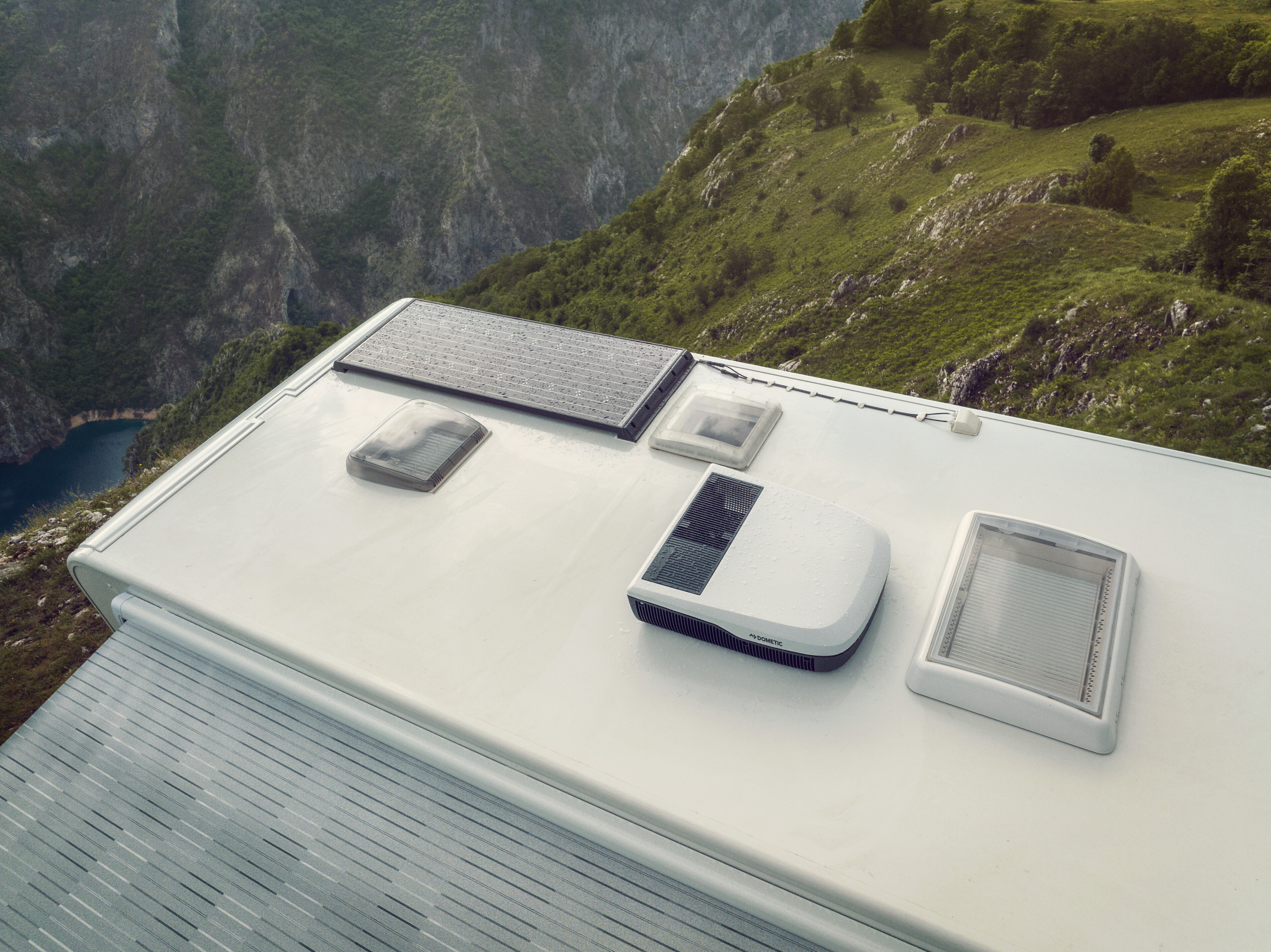
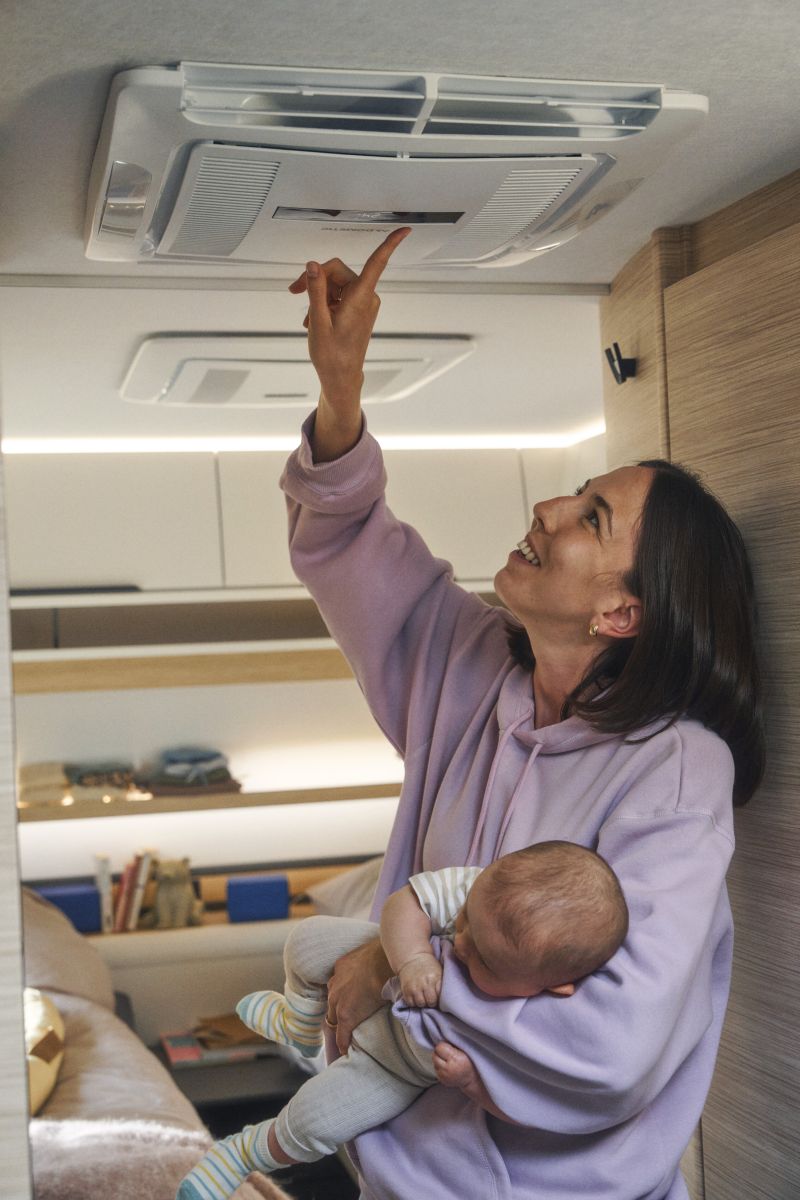
.png)
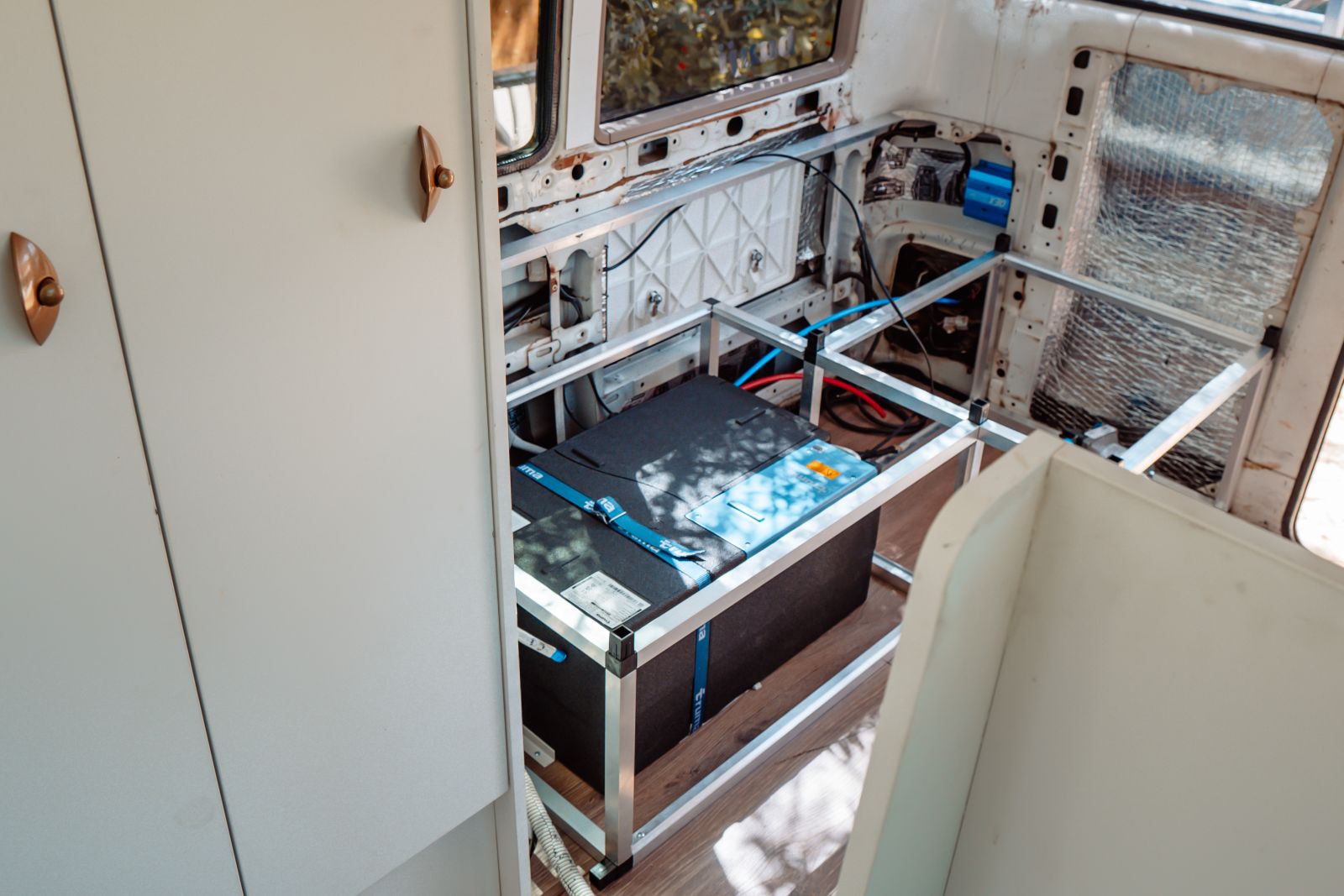

.jpeg)
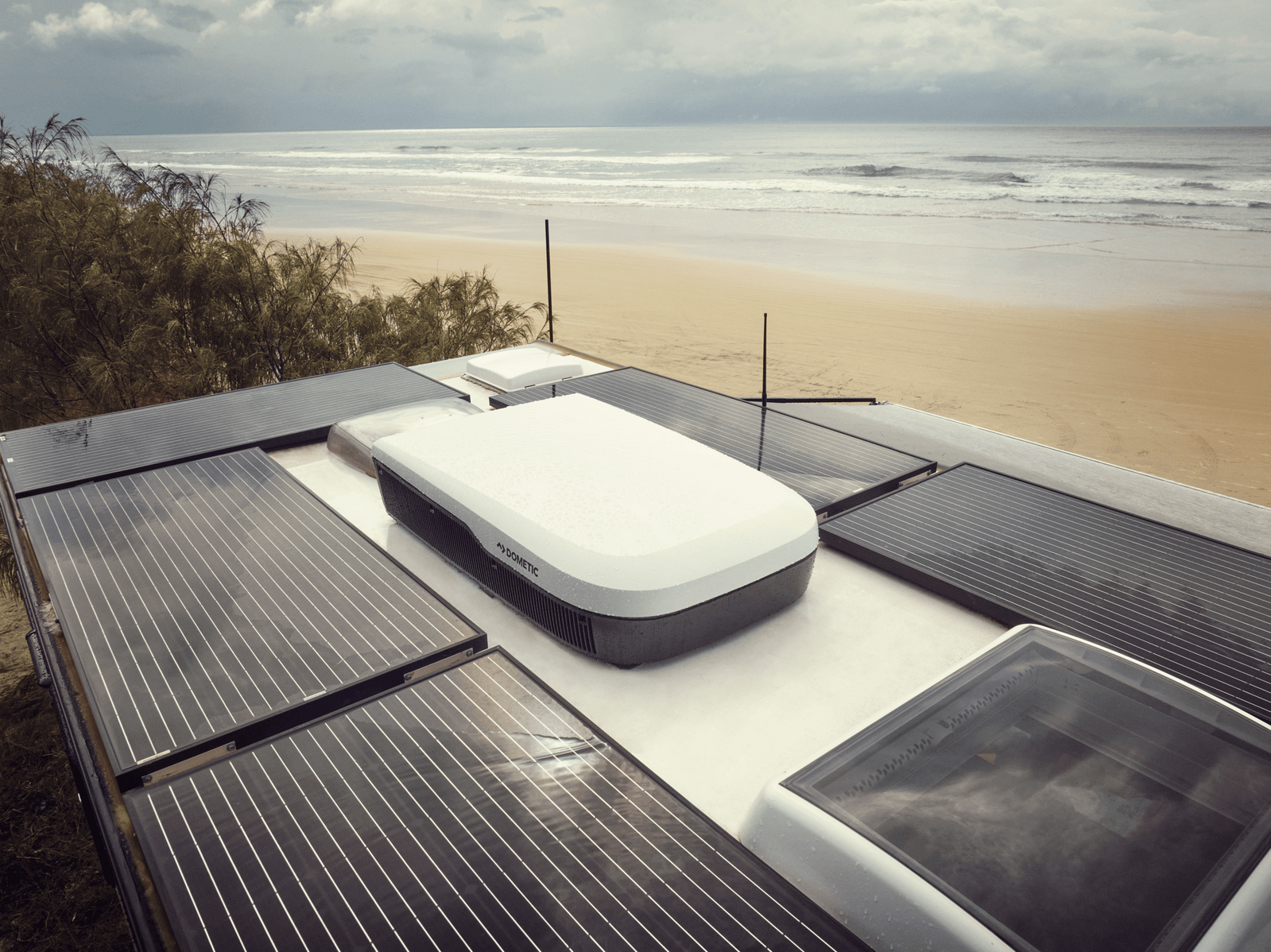
.jpg)
.jpg)
